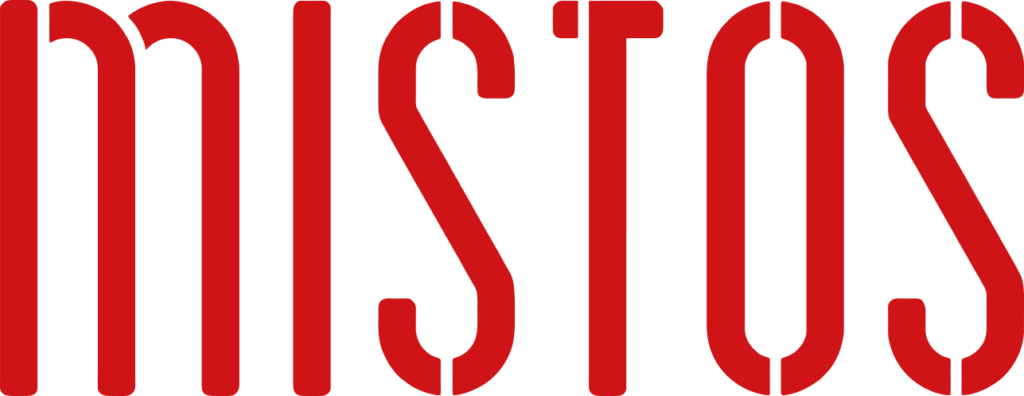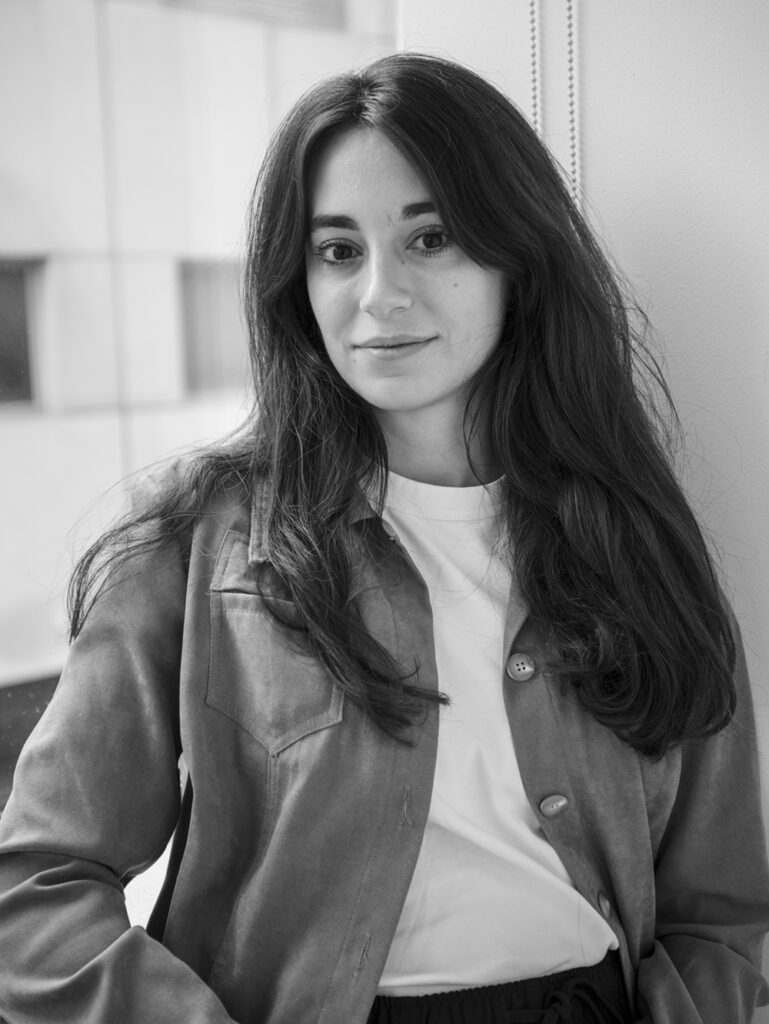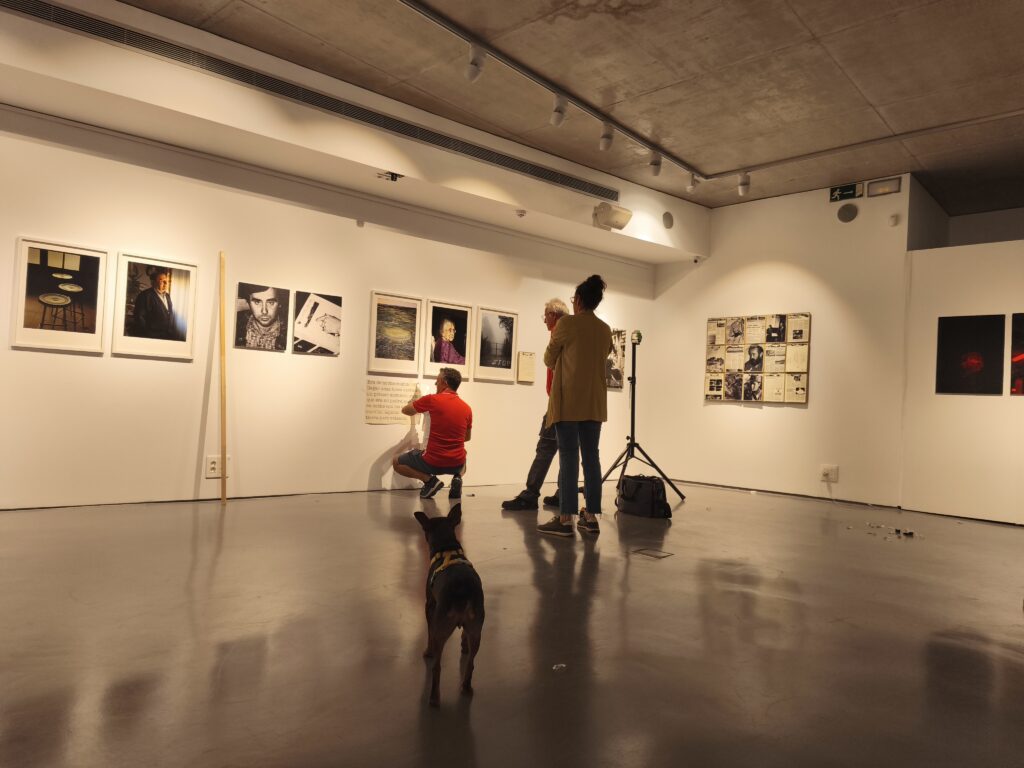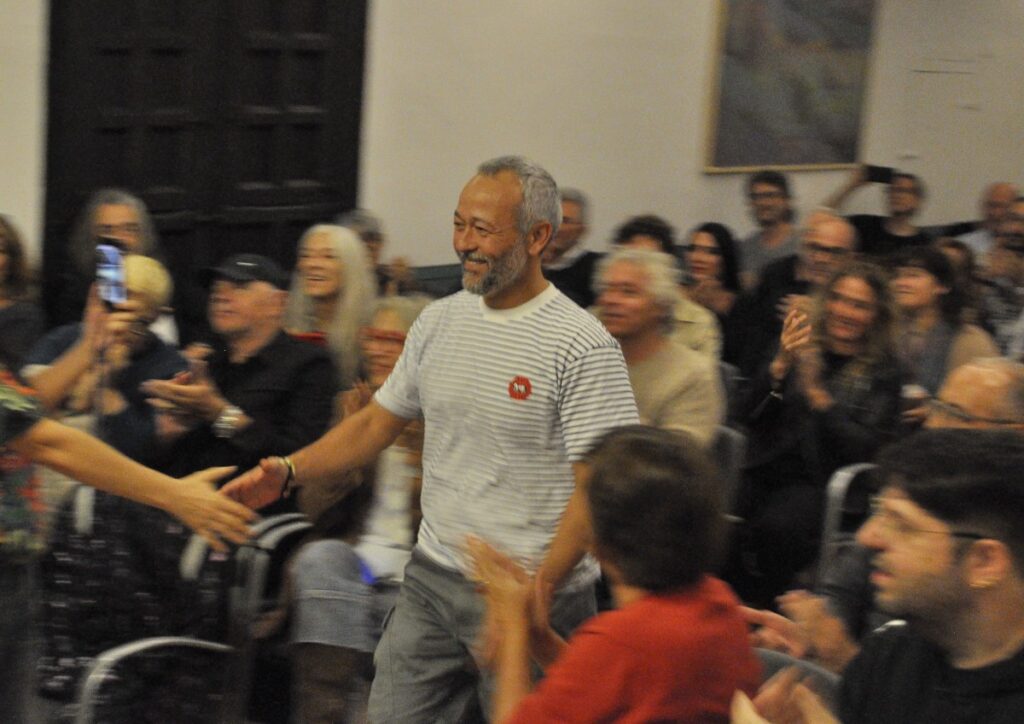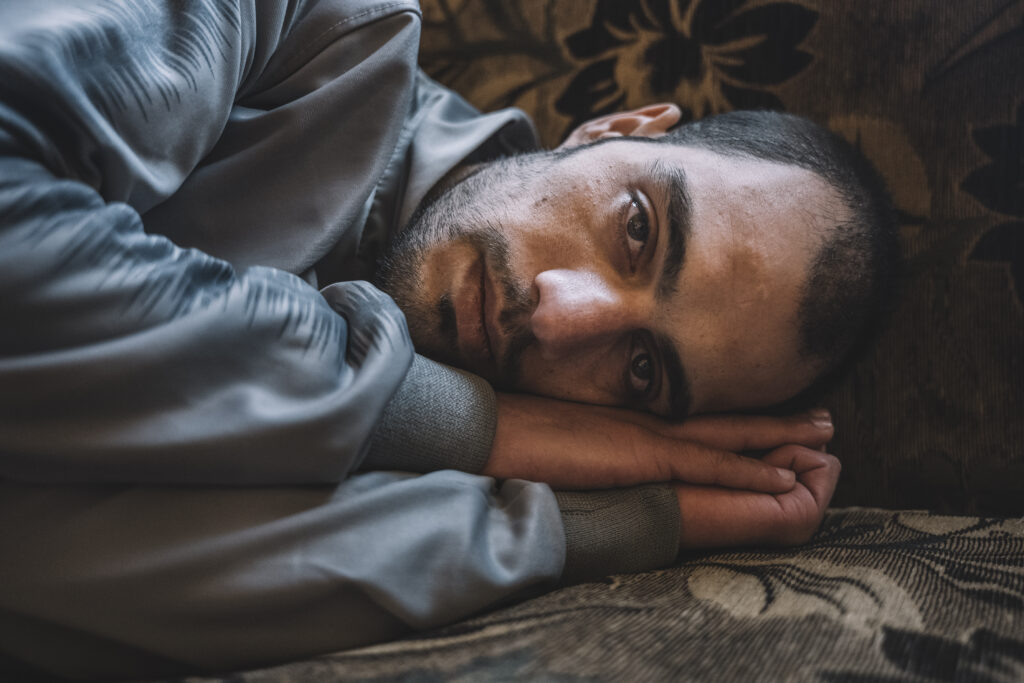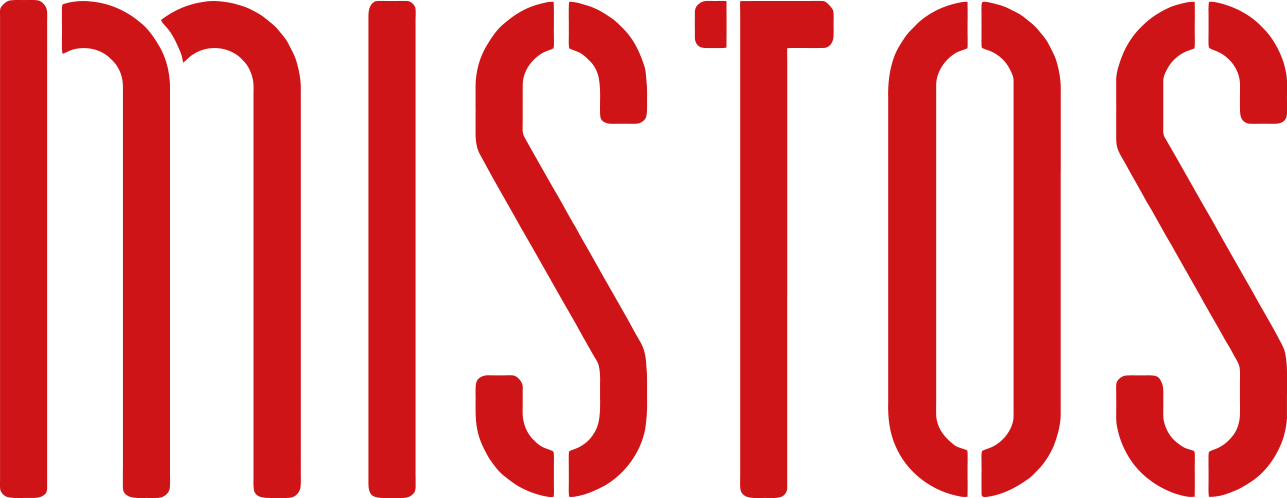Acabamos de terminar el curso Integral Iluminación PRO con Matías Alhambra, que consistía en numerosas horas de prácticas basadas en los conocimientos teóricos que adquirimos en el primer día. También dedicamos tiempo a revisar algunos de los iconos de la fotografía, así como gigantes contemporáneos y unas jóvenes promesas del campo, con un ligero sesgo a favor de la fotografía de moda.
We have just finished the Iluminación Integral PRO course with Matías Alhambra, which consisted of numerous hours of practice based on the theoretical knowledge we acquired on the first day. We also took the time to revisit some of the icons of photography as well as contemporary giants and up-and-coming artist of the field with a slight bias towards fashion photography.
Siempre he estado fascinada por la moda, por su ubicuidad en nuestra cultura y por su gran influencia en la forma en que definimos la belleza o un cuerpo perfecto. Hoy en día, nos rodean continuamente las imágenes de los últimos diseños de moda. Es difícil imaginar el mundo antes de la fotografía de moda. Pero, ¿sabemos realmente cuando empezó?
I have always been fascinated by fashion for its ubiquity in our culture and its vast influence on the way we define beauty or a perfect body for that matter. Nowadays, images of the latest fashion designs surround us at every turn. It is difficult to imagine the world before fashion photography. But do we actually know when it started?
No es de extrañar que, tenemos que regresar a mediados de los años 1850, cuando Virginia Oldoini, Condesa de Castiglione, una mujer de la nobleza menor de la Toscana y la amante de Napoleón III, comenzó a tener sus fotografías tomadas por el fotógrafo francés Pierre Louis Pierson, una colaboración que dio lugar a más de 400 fotos de la condesa vestida de trajes teatrales y dramáticos y a veces poses atrevidas, como la fotografía que mostró sus piernas desnudas. Estas imágenes hablan de su extravagancia y de su personalidad carismática, con un sentido agudo del arte y de la moda. Como dice Rebecca Arnold en su libro: Fashion: a Very Short Introduction: «Para ella, las interconexiones entre la moda y el arte eran una herramienta de gran alcance para permitir la experimentación con diferentes identidades…» La fotografía era una manera conveniente para inmortalizar sus aspiraciones lo que hace de ella la primera modelo de fotografía de moda y estilista.
Not surprisingly, we have to go way back to the mid-1850s, when Virginia Oldoini, Countess di Castiglione, a Tuscan noblewoman and mistress of Napoleon III, started having her pictures taken by the French photographer Pierre Louis Pierson, a collaboration that resulted in over 400 pictures of the Countess dressed in theatrical outfits and dramatic and at times risqué poses, such as the photograph that featured her bare legs. These images speak of her flamboyance and a charismatic personality with an acute sense of art and fashion. As Rebecca Arnold says in her book Fashion, a Very Short Introduction: “For her, the interconnections between fashion and art were a powerful tool to allow experimentation with various identities…” Photography was a convenient way to immortalize her aspirations thus making her the first fashion photography model and stylist.




El principio del siglo XX vio el afloramiento de las revistas de moda como Vogue y Harper’s Bazaar y la fotografía de moda debido a la introducción de la impresión de semitonos (tinta en puntos para detener que el papel se empape). Vogue, que al principio era una pequeña revista de la sociedad de Nueva York, se convirtió en una de las principales revistas de moda de Estados Unidos y más tarde se extendió a Europa bajo el liderazgo de Condé Montrose Nast, quien lo compró en 1905. Harper’s Bazaar fue inicialmente una revista semanal dirigida a las mujeres de las clases medias y altas, pero luego en 1901 empezó a publicar mensualmente, siempre buscando proporcionar alta calidad mediante el empleo de los mejores fotógrafos, diseñadores y escritores de la época.
The beginning of the twentieth century saw the flowering of fashion magazines such as Vogue and Harper’s Bazaar and fashion photography due to the introduction of halftone printing (ink in dots to stop the paper getting soggy). Vogue, which initially was a small New York society magazine, became America’s premier fashion magazine and later on spread to Europe under the leadership of Condé Montrose Nast, who bought it in 1905. Harper’s Bazaar was initially a weekly magazine aimed at women in middle and upper classes, but then in 1901 moved on to monthly issues, always looking to provide high quality by employing the best photographers, designers and writers of the age.


A principios del siglo XX había una tendencia a la creatividad y a la innovación en la fotografía de moda. Fotógrafos de las décadas de 1920 y 1930 se esforzaron no sólo en crear imágenes hermosas, sino en cambiar la fotografía de moda a una forma de arte destacada por sí misma. Edward Steichen, George Hoyningen-Huene, Horst P. Horst y Cecil Beaton comenzaron la larga tradición de la fotografía de moda con una visión artística tras ella.
At the beginning of the twentieth century, there was a drive for creativity and innovation in fashion photography. Photographers of the 1920s and 1930s strived not only to create beautiful images, but to make fashion photography an outstanding art form of its own. Edward Steichen, George Hoyningen-Huene, Horst P. Horst and Cecil Beaton started the long tradition of fashion photography with an artistic vision behind it.
1. Edward Steichen
Edward Steichen se dice que llevó a cabo la primera sesión de fotos modernas, que según Jesse Alexander, significaba que estaba «fotografiando las prendas de tal forma que transmitían un sentido de su calidad física, así como su aspecto formal, en lugar de simplemente ilustrar el objeto. «(Revista HotShoe de 2008) Sus fotos de vestidos diseñados por el modisto Paul Poiret trascendieron en el dominio de la moda, lo que lleva al espectador al dominio del arte. La serie fue publicada en 1911 en la revista Arte y decoración.
Edward Steichen is said to have conducted the first modern photo shoot, which according to Jesse Alexander, meant that he was “photographing the garments in such a way as to convey a sense of their physical quality as well as their formal appearance, as opposed to simply illustrating the object.” (HotShoe magazine, 2008) His photos of gowns designed by couturier Paul Poiret thus transcended the domain of fashion, leading the viewer into the domain of art. The series was published in 1911 in the magazine Art et Décoration.



2. George Hoyningen-Huene
Nacido en San Petersburgo de padres alemanes del Báltico y estadounidenses, durante la Revolución Rusa huyó a Londres y luego a París, donde se convirtió primero en ilustrador, y después en jefe de fotografía del Vogue francés en 1925. Se trasladó a EE.UU. en 1935, donde trabajó exclusivamente para Harper’s Bazaar y colaboró en la coordinación de color con George Cukor, así como otros directores del cine en Hollywood. Creó imágenes elegantes sin precedentes, que lo convirtieron en uno de los fotógrafos más influyentes y más exquisitos del siglo XX.
Born in Saint Petersburg to Baltic German and American parents, during the Russian Revolution he fled to London and then to Paris where he became an illustrator first, then chief of photography at the French Vogue in 1925. He moved to The U.S.A in 1935 where he worked exclusively for Harper’s Bazaar and collaborated on colour coordination with George Cukor as well as other film directors in Hollywood. He created unprecedented images of elegance, which made him one of the most influential and finest photographers of the twentieth century.




3. Horst P. Horst
Horst Paul Albert Bohrmann nació en Alemania, donde estudió artes aplicadas en Hamburgo. En 1930 se trasladó a París para continuar sus estudios, donde conoció a George Hoyningen-Huene y se convirtió en su ayudante de fotografía y en su amante. Preparó sus decorados dando especial atención al detalle, y a menudo usó iluminación de cuatro puntos para iluminar sus modelos. Sus imágenes hablan de un gran sentido del estilo, de la elegancia y de un fuerte sentido del surrealismo.
Horst Paul Albert Bohrmann was born in Germany where he studied applied arts in Hamburg. In 1930 he moved to Paris to further his studies, where he met George Hoyningen-Huene and became his photography assistant and lover. He prepared his sets with great attention to detail, frequently using four-spot lighting to illuminate his subjects. His pictures speak of a high sense of style and elegance and a strong sense of surrealism.




4. Cecil Beaton
Empezó a aprender sobre fotografía a la edad de 11 años con su niñera, tomando fotos de sus hermanas. Comenzó a trabajar para la revista Vogue en 1927. Según Donald Albrecht: Cecil «siempre inyectaba una capa de teatralidad» en sus escenas cuando disparó la fotografía de moda. El fondo era igualmente importante y merecedor de atención y control, lo que define su estilo glamoroso, con un estilo teatral.
He started learning photography at the age of 11 with his nanny, taking pictures of his sisters. He started working for Vogue in 1927. According to Donald Albrecht: Cecil “always injected a layer of theatricality” into his scenes when he shot fashion photography. The background was equally important and deserving of attention and scrutiny, which defined his glamorous style, with a theatrical panache.




“Sé audaz, sé diferente, sé práctico, sé cualquier cosa que haga valer la integridad de tu propósito y de tu visión imaginativa en contra de los que juegan sobre seguro, de las criaturas de lugares comunes, de los esclavos de lo ordinario.”Cecil Beaton
“Be daring, be different, be impractical, be anything that will assert integrity of purpose and imaginative vision against the play-it-safers, the creatures of the commonplace, the slaves of the ordinary.” Cecil Beaton

